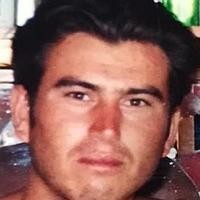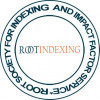Research Article
Conference Paper
Issue Editorial Board



Bilkent Üniversitesi Uygulamalı Teknoloji ve İşletmecilik Yüksekokulu Turizm ve Otel İşletmeciliği Bölümü’nden mezun oldu (2014). Yüksek lisans derecesini Afyon Kocatepe Üniversitesi’nden Turizm İşletmeciliği Dalı’ndan aldı (2017), doktora eğitimine yine Afyon Kocatepe Üniversitesi Turizm İşletmeciliği Dalı’nda devam etmektedir. Afyon Kocatepe Üniversitesi’nde çalışmaya başladı (2016) ve görevine devam etmektedir. Temel çalışma alanı turizm işletmeciliği, sürdürülebilirlik ve çevre yönetimidir.
Aim & Scope
Journal of Tour Guiding (JOTOG) is a peer-reviewed journal that aims to contribute to knowledge and development of tour guiding field by publishing studies with academic and scientific qualities at national and international level in the field of tour guiding.
Journal of Tour Guiding (JOTOG) also aims to initiate a specialization among tourism journals with focusing solely on tour guiding studies. Besides, JOTOG accepts articles on tourism policy developments on tour guiding and other fields which have inter- disciplinary contributions. In this respect, the journal also includes studies on trends in tour guiding and discussions of current and future influences on tour guiding, focusing on new developments and developments in other fields thanks to its interdisciplinary nature. Additionally, JOTOG aims to follow a publishing policy that prioritizes the concept of up-to-date in the field of applied and theoretical studies. Furthermore, the journal also takes reviews of tourism representatives on tour guiding into consideration for publication. Journal of Tour Guiding accepts articles in both Turkish and English for publishing. Accordingly, authors willing to send a Turkish article to journal must supply structured abstracts in both languages in line with the journal’s structured abstract format. On the other hand, authors who send articles in English can get help from editorial board for free Turkish structured abstracts.
Author Guidelines
Authors who will send their articles to the Journal of Tour Guidance (TURED) must edit their manuscripts according to the following writing rules before uploading their work to the system. Manuscripts to be sent to the journal will be examined primarily in terms of the subject and then the author guidelines. Failure to comply with these issues may result in the manuscript being returned or the process extended. In this context, while uploading manuscripts to the journal, in addition to the journal's theme, the following author guidelines must be followed.
1) PAGE LAYOUT
File Type: Microsoft Word
Paper Size: A4
Page Margins: Top: 3,0 cm / Bottom: 3,0 cm / Left: 3,0 cm / Right: 2,5 cm
Paragraph Indent: Left Indent: 1,25 cm [Only in the body of the article]
Text Spacing: 1,0
Line Blanking: Before: 6 pts / After: 6 pts
2) MANUSCRIPT LENGHT
Total Word Count: between 6.000 - 12.000 [Including headings, abstracts, tables, figures and references]
3) INFORMATION ABOUT THE AUTHORS/MANUSCRIPT (TITLE PAGE)
The contact information of the authors must be on the first page of the manuscript (on the Title Page) and must not be used on other pages of the manuscript.
Title Page of the Manuscript (First Page)
Title in Turkish: 12 points / Bold / Alingment: Center / Only Initial Letters Capital)
Title in English: 12 points / Bold / İtalic / Only Initial Letters Capital)
After the titles, information about authors must be given in the following order. [Times New Roman / 12 points / Bold / Alingment: Center]
1. Title and Author Name-Surname
2. University, Department (Faculty, Vocational School, Vocational School, etc.), Country [This section will be given in both Turkish and English.]
3. Orcid ID [available at www.orcid.org]
4. E-mail
5. The telephone number of the person/author (corresponding) responsible for the relevant article must be written at the bottom of this page.
You can also examine the "Sample Manuscript Writing Format" on how to prepare the introduction page.
4) ABSTRACT
Turkish and English abstracts of the manuscripts to be uploaded to the Tourist Guidance Journal must be submitted together, including the following sub-titles. The number of keywords given at the bottom of the abstracts should be at least 3 and at most 6 words. The abstracts must be structured separately as indicated below (the parts marked with * indicate the required sections in the abstracts).
*Purpose and Importance (Required): The purpose of the study and its importance must be clearly stated. [Max 200 words]
*Methodology (Required): The method used in the study (such as universe, sample, data collection, data analysis methods) must be clearly stated. [Max 200 words]
*Findings (Required): The findings obtained in the study should be included in this section as a very short/summary. [Max 300 words]
*Originality/Value (Required): What are the features/differences that make the study unique? In the light of the findings obtained in the study, the evaluation of the authors and their contribution to the field/science should be included in this section. [Max 200 words]
Limitations (Optional): The limitations of the study can be stated. [Maximum 100 words]
Implications (Optional): Authors' suggestions regarding the practical implications of the study should be included in this section [Maximum 100 words]
*Keywords (Required): At the bottom of the abstract, at least 3 and at most 6 keywords must be included.
5) HEADINGS
The main title of the manuscript in Turkish and English; in addition to the title page on the first page, should be written on the second page in Times New Roman font 12-point bold, only initial capital letters, center alligned and before abstracts. Turkish and English abstracts, should be written, respectively. The order should be in the form of 1-Turkish title, 2-English title, 3-Turkish abstract, 4-English abstract.
The headings of the manuscript should be written in Times New Roman font 12 points (bold), left justified, before 6nk, then 6nk and 1.5 cm (one and a half) line spacing. Headings should not be indented, they should be left justified.
All headings except abstract, introduction and references should be numbered. (Ex: Introduction, 1. Tourist Guidance Education in the World 2. Tourist Guidance Education in Turkey, 3. Method, 4. Findings, 5. Conclusion, Discussion and Suggestions, References).
1st Degree Headings, Times New Roman 12 points, bold, justified left, only the first letters are capitalized, no paragraph indentation.
2nd Degree Headings, Times New Roman, 12 pt, bold, justified left and must be numbered as 1.1., 1.2. Only the first letters are capitalized, no paragraph indentation.
3rd Degree Headings must be written in Times New Roman, 12 points, left justified, bold, italic and must be numbered as 1.1.1. ; 1.2.1. etc.. Only the first letters are capitalized, no paragraph indentation.
Note: The headings (given above) to be used in the abstract must be presented in 12 font size, bold and only the first letters of the headings are capitalized.
6) MANUSCRIPT TEXT
Font: Times New Roman / 11 points, 1 cm line spacing.
Spacing Between Paragraphs: Top: 6nk and Bottom: 6nk ["enter" should only be used for paragraphs.]
Paragraph Indent: 1,25 cm from left
Text Allignment: Justified
7) TABLES
Table Titles: Above the table / Times New Roman / 11 pt / Initial Letters Capitalized / Only the table title and number Bold / Left Justified / Table Descriptive Title Italic, Left Justified and under the Table Title
Example:
Table 1
Country Citizenship of Children's Parents
Table Body/ Texts in Tables: Times New Roman / 10 points (Smaller fonts can be used if the texts do not fit in the table). Headings within the table should be center aligned / No borders should be used within the table, only borders should be used to distinguish the main-sub-headings and the total row.
Table Reference: Below the table / Times New Roman / 10 point
Example: Reference: Pelit, 2005
Tables can be used with the horizontal page layout, if necessary.
For detailed information about Tables and Figures, visit https://apastyle.apa.org/style-grammar-guidelines/tables-figures
8) FIGURES (Graphic, Picture etc.)
Figure Titles: Above the Figure / Times New Roman / 11 pt / Initial Letters Capitalized / Only table title and number Bold / Left Justified / Figure Explanatory Title Italic, Left Aligned and under the Table Title
Figure Reference: Below the table / Times New Roman / 10 pt
Example: Reference: Pelit, 2005
Figures/pictures can be used with the horizontal page layout, if necessary.
The images to be uploaded to the system should be high quality. It should be formatted in tif, .jpeg, .bmp format with a resolution of at least 300 dpi and a width of at least 10 cm.
Note: Tables and figures do not need to be added to the system separately, and the manuscript should uploaded to the system as a whole. Tables and figures will be placed in the relevant place of the text.
For detailed information about Tables and Figures, visit https://apastyle.apa.org/style-grammar-guidelines/tables-figures
9) REFERENCES IN THE STUDY (TEXT)
References should be indicated in parentheses where necessary in the text in accordance with the “APA-7” style. Citation in the text must be like the explanation and examples shown below. It is not necessary to indicate the number of the cited page when citing in the text. However, it should be included in the bibliography in detail.
For Single-Author References:
Example: Pelit (2015) or (Spreitzer, 1996)
If more than one reference is to be cited at the same time, the authors must be listed alphabetically: (Pelit, 2015; Spreitzer, 1996; Yavuzer, 2000)
For References with Two Authors:
Example: (Porath & Pearson, 2009) or Ural & Kılıç (2014)
For References with More than Two Authors:
The abbreviation 'et al.' should be used after the surname of the first author.
Example: (James et al.,, 2008)
Institutions, Newspapers, Internet Sites, etc., whose author is unknown.
Example: Tourism revenues will rise in 2021 (KTB, 2020).
This year's tourism data provides a clue that the per capita expenditure of tourists will decrease in the next year (Turizm Gazetesi, 2020).
Household population survey contains data that a significant part of Turkey's population has migrated to cities (TUIK, 2020).
When the latest development plans are examined, it will be understood that the tourism sector is increasingly included in the development plans (DPT, 2020).
Note: Details and URL (Web) addresses of relevant references should be clearly presented in the references part. The institution and year of receipt should be stated in the text instead of the web extension.
10) REFERENCES
Studies in the references must be presented in alphabetical order. References should be written at the end of the text in Times New Roman 12 pt (normal), justified, first 6 pt, then 6 pt, 1.5 cm line spacing in accordance with the examples below. There will be no paragraph indentation, 0.5 cm indent from the second line for each reference. The continuation of the same reference will be in a single line spacing.
For Books:
Surname, Initials. (Year). Title of the book (Print number). Publishing organization.
In books with more than one author, a comma and & should be used before the last author's last name,
The title of the book must be italicized, only the first letter of the title must be capitalized, followed by lowercase letters,
Capital letters must be used after the punctuation marks,
After the relevant definition, only the period (.) must be used,
Publishing house must not have place-city/country information, Ankara: Detay Publishing (incorrect), Detay Publishing (correct),
(If any) The doi number of the book (with url link and underlined) should be included,
For Single Authored Books:
Example: Zengin, B. (2006). Turizm coğrafyası (2. baskı). Değişim Yayınları.
For Books with Two Authors:
Example: Altunışık, R., & İslamoğlu, H. (2008). Tüketici davranışları (1. baskı). Beta Basım Yayım.
For Books with Three or More Authors:
Example: Tengilimoğlu, D., Akbolat, M., & Işık, O. (2015). Sağlık işletmeleri yönetimi. Nobel Yayıncılık. https://doi.org./10.1037/0000168-000
For Edited Books:
(Ed.) should be used after the name of the editor in books with a single editor, and (Eds.) in books with more than one editor,
The title of the book must be italicized, only the first letter of the title must be capitalized, followed by lowercase letters,
Capital letters must be used after the punctuation marks,
For Books with Single Editor:
Example: Özbek, M. (Ed.) (2005). Kamusal alan. Hil Yayınları.
Bower, M. (Ed.) (1990). Wisdom: Its nature, origins, and development. Cambrdige University Press
For Books with Two Editors:
Example: Hygum, E., & Pedersen, P. M. (Eds.). Early childhood education: Values and practices in Denmark. Hans Reitzel Forlag.
For Chapter in Edited Book or Edited E-Book:
Surname, Initials. (Year). Chapter name, Editor's First Letter and Surname (Ed/Eds.), Title of book (print number, chapter page number). Publisher.
Example: Baytok, A. (2015). Turizm işletmelerinde insan kaynakları yönetiminde destek işlevler, İçinde E. Pelit (Ed.). Turizm İşletmelerinde İnsan Kaynakları Yönetimi (1. baskı, ss. 28-46). Grafiker Yayınları.
Aron, L., Botella, M., & Lubart, T. (2019). Culinary arts: Talent and their development. İçinde R. F. Subotnik, P. Olszewski-Kubilius, & F. C. Worrell (Eds). The psychology of high performance: Developing human potential into domain-specific talent (ss. 345-359). American Psychological Association. https://doi.org/10.1037/0000120-016
For Translated Books:
Example: Lewis, B. (2000). Modern Türkiye’nin doğuşu (M. Kıratlı, Çev.). Türk Tarih Kurumu.
For a Religious Book:
Example: Kur’an-ı Kerim (2020). Diyanet İşleri Başkanlığı. https://kuran.diyanet.gov.tr/musaf
The Bhagavad Gila (E. Easwaran, Çev.; 2. baskı). (2007). The Blue Mountain Center of Meditation.
King James Bible. (2017). King James Bible Online. https://www.kingjamesbibleonline.org/
For Identification Guides:
Example: American Psychiatric Association. (1980). Diagnostic and statistical manual of mental disorders (3rd ed.).
World Health Organization. (2016). International statistical classification of diseases and related health problems (5. baskı). https://icd.who.int/browse10/2016/en
For Articles in Scientific Journals:
In articles with more than one author, a comma and & must be used before the last author's last name,
Only the first letter of the article title must be capitalized, followed by lowercase letters,
Capital letters must be used after the punctuation marks,
Journal name and volume number must be italicized, number and page information must be written plain, ,
(If any) The doi number of the article (with url link and underlined) must be included,
All names and surnames of up to 20 authors must be given, in publications with more than 20 authors, ... (three dots) must be placed after the 19th author and the last author must be added,
In scientific journals that do not have a page range but have article numbers instead, Article …… (Article number) must be added after volume and number information,
In journals without volume or issue numbers, only existing information must be added instead of missing information,
For Single Authored Articles:
Surname, Initials. (Year). Title of the article. Full Name of the Journal, Volume (Issue), Number of Pages (Range).
Example: Yozcu, S. (2020). Mağara tur düzenlemesi ve mağara rehberinin görevleri. Turist Rehberliği Dergisi (TURED), 3(1), 44-58. https://doi.org/10.34090/tured.742144
Zapf, D. (1999). Organizational, work, group related and personnel causes of mobbing/bullying at work. International Journal Manpower, 20(1/2), 70-85.
For Articles with Two Authors:
Example: Gürbüz, S., & Mert İ. S. (2009). Örgütsel adalet ölçeğinin geçerlik ve güvenirlik uygulaması: Kamuda görgül bir çalışma. Amme İdaresi Dergisi, 42(3), 117-139. https://doi.org/10.1037/0278-6133.24.2.328
Rayner C. & Hoel, H. (1997). A summary review of literature relating to workplace bullying. Journal of Community & Applied Social Psychology, 7(3), 181-191.
For Articles with Three or More Authors:
Example: Tolay, E., Sürgevil, O., & Topoyan, M. (2012). Akademik çalışma ortamında yapısal ve psikolojik güçlendirmenin duygusal bağlılık ve iş doyumu üzerindeki etkileri. Ege Akademik Bakış, 12(4), 449-465.
Pugh, S. D., Skarlicki, P. D., & Passell, S. B. (2003). After the fall: Layoff victims trust and cynicism in re-employment. Journal of Occupational and Organizational Psychology, 76(2), 201-212.
For Non-Scientific Periodical Articles:
Surname, Initials. (Year, Month-Day). Title of the article. The Full Name of the Journal.
For online journals, the url address of the publication must be given,
(If any) Volume and page numbers must be added,Accessed from / Retrieved from must not be used,
Example: Schulman, M. (2019, Eylül 9). Superfans: A love story. The New Yorker. https://www.newyorker.com/magazine/2019/09/16/superfans-a-love-storty
For Newspaper Article, Blog Post:
Surname, Initials. (Year, Month-Day). The title of the article. Newspaper/Blog Name. URL address
Example: Carey, B. (2019, Mart 22). Can we get better a forgetting? Superfans: A love story. The NewYork Times. https://www.nytimes.com/2019/03/22/health/memory-forgetting-psychology.html
For the Online Dictionary:
Institution/Platform. (n.d.). Word. In Dictionary name (Italic, First letter capital, continued lowercase). Access date: Month-Day, Year, Url address
Example: Türk Dil Kurumu. (t.y.). Turizm. İçinde Güncel Türkçe sözlük. Erişim tarihi: Ocak 1, 2021, https://sozluk.gov.tr
Merriam-Webster. (t.y.). Semantics, İçinde Merriam-Webster.com dictionary. Erişim tarihi: Ocak 1, 2021, https://www.merriam-webster.com/dictionary/semantics
For the Printed Dictionary:
Institution/Publisher. (Year). Word (First letter capitalized). In Dictionary name (Italic, First letter uppercase, continued lowercase). (Print count, page information)
Example: American Psychological Association. (2015). Mood induction. İçinde APA dictionary of psychology (2. baskı, s. 667).
For Papers Published in Proceedings:
Same as edited books.
Example: Kushilevitz, E., & Malkin, T. (Eds.). (2016). Lecture notes in computer science: Vol. 9562. Theory of cryptography. Springer. https://doi.org/10.1007/978-3-662-49096-9
For Papers Published as a Chapter in Proceedings:
Same as chapters in edited books.
Example: Bedenel, A. L., Jourdan, L., & Biernacki, C. (2019). Probability estimation by an adapted genetic algorithm in web insurance. İçinde R. Battiti, M. Brunato, I. Kotsireas, & P. Pardalos (Eds.), Lecture notes in computer science: Vol. 11353. Learning and intelligent optimization (ss. 225-240). Springer. https://doi.org/10.1007/978-3-030-05348-2_219
For Abstracts Published in Print:
Example: Evans, A. C. (2019, Nisan 25-28). Evrimsel sosyal bağlantı teorisi: Geçmiş, şimdi ve gelecek [Konferans sunum özeti]. Batı Psikoloji Derneği’nin doksan dokuzuncu yıllık kongresi, Pasadena, CA, ABD. https://convention.apa.org/2019-video
For Unpublished Papers:
Example: Evans, A. C. (2019, Ağustos 8-11). Silah şiddeti: Toplumun gücüne ilişkin bir olay [Konferans sunumu]. APA 2019 Kongresi, Chicago, IL, ABD. https://convention.apa.org/2019-video
For Encyclopedias Without Authors and Editors:
Name of Encyclopedia (Year) Title of Chapter, Volume: Number of Editions, Name of Encyclopedia, Place of Publication: Publication Institution, Page range.
Example: Encyclopaedia Britannica (1926). Psychology of Culture Contact, Vol. 1, (13th edition). London and New York: Encyclopaedia Britannica, 765-71.
For Published Theses:
A thesis is considered published when it is accessible from a database such as YÖK Thesis Center, ProQuest Dissertations and Theses Global, an institutional repository or an archive.
Surname, Initials (Year). Thesis title (Italic, First letter capitalized, continued lowercase). (Thesis No. ....) [Type of Thesis, University]. Thesis Database. Url Address
Example: Yılmaz, F. (2021). Türkiye’de eğitimin ekonomik etkileri üzerine nitel bir araştırma (Tez No. 10169573) [Yüksek lisans tezi, Ankara Üniversitesi]. YÖK Tez Merkezi. https://tez.yok.gov.tr/UlusalTezMerkezi/giris.jsp
Kabir, J. M. (2016). Factors influencing customer satisfaction at a fast food hamburger chain: The relationship between customer satisfaction and customer loyalty (Yayın No. 101695573) [Doktora tezi, Wilmington University]. ProWuest Dissertations & Theses Global.
For Unpublished Theses:
Example: Harris, L. (2014). Instructional leadership perceptions and practices of elementary school leaders [Yayınlanmamış doktora tezi]. University of Virginia.
For News Site References:
Surname, Initials (Year, Month-Day). News title (Italic, First letter uppercase, continued lowercase). News Site Name. Url Address
Example: Bürçeler, D. (2020, Aralık 19). Kuraklık riski ne boyutta?. TRT Haber. https://trthaber.com/haber/turkiye/kuraklik-riski-ne-boyutta-539400.html
For Official Institution Site References:
Name of Institution/Organization or, if any, author information (Year, Month-Day). Article/News name (Italic, First letter capital, continued lowercase). Institution/Unit Name. Url Address
Example: Halk Sağlığı Genel Müdürlüğü (2021, Ocak). Metabolizma ve çölyak. T. C. Sağlık Bakanlığı, Halk Sağlığı Genel Müdürlüğü https://hsgm.saglik.gov.tr/tr/metabolizma-ve-colyak
Giovanetti, F. (2019, November 16). Why we are so obsessed with personality types. Medium. https://medium.com/the-business-of-wellness/why-we-are-so-obsessed-with-personality-types-577450f9aee9
For Reports of Official Institutions:
Institution/Organization. (Year). Report name (Italic, First letter capital, continued lowercase). (Publication No). Institution/Unit. URL address
Example: T.C. Sağlık Bakanlığı Halk Sağlığı Genel Müdürlüğü. (2019). Türkiye beslenme ve sağlık araştırması (TBSA) (Sağlık Bakanlığı Yayın No: 1132). T.C. Sağlık Bakanlığı Halk Sağlığı Genel Müdürlüğü. https://hsgm.saglik.gov.tr/depo/birimler/saglikli-beslenme-hareketli-hayat-db/Yayinlar/kitaplar/diger-kitaplar/TBSA-Beslenme-Yayini.pdf
Stuster, J., Adolf, J., Byrne, V., & Greene, M. (2018). Human exploration of Mars: Prelimeinary lists of crew tasks (Report No. NASA/CR-2018-220043). National Aeronautics and Space Administration. https://ntrs.nasa.gov.archive/nasa/casi.nstr.nasa.gov./20190001401.pdf
For Brochures or Press Releases:
Institution. (Year). Brochure name (Italic, First letter capital, continued lowercase) [Brochure/Press release]. URL address
Example: Göç İdaresi Genel Müdürlüğü (2019). Türkiye’de eğitim sistemi [Broşür]. https://www.goc.gov.tr/kurumlar/goc.gov.tr/Yayinlar/Brosurler/1_EGİTİM_BROSURU_-2.pdf
For PowerPoint Presentation:
Surname, Initials (Year, Month-Day). Presentation title (Italic, First letter capital, continued lowercase) [Type of work]. Online Platform. Url Address
Example: Çetin, A. (2021, Ocak 2). Tezin giriş bölümü nasıl yazılır [PowerPoint sunum]. Tez Yardım Platformu. https://www.tezyardimplatformu.com/post/tezin-giris-bolumu-nasil-yazilir
For Museum Artifacts:
Surname, Initials (Year). Title of the work (Italic, First letter capitalized, continued lowercase) [Type of Work]. Place, City, Country where the work is exhibited. Url Address
Example: van Gogh, V. (1889). The starry night [Art]. The Museum of Modern Art, New York, NY, United States, https://www.moma.org/learn/moma_learning/vincent-van-gogh-the-starry-night-1889/
For the Movie:
Surname, Initials (Director). (Year). Movie title (Italic, First letter capital, continued lowercase) [Description if in a Different Language] [Movie]. Producer Company, Producer Name (If Any).
Example: Fleming, V. (Yönetmen). (1939). Gone with the wind [Rüzgar gibi geçti] [Film]. Selznick International Pictures; Metro-Goldwyn-Mayer.
For Music:
Surname, Initials. (Year). Music title (Italic, First letter capital, continued lowercase) [Type of work]. Producer Company, Producer Name (If Any).
Example: Brouwer, L. (1987). Cuban landscape with rain [Guitar]. Les Editions Doberman-Yppan.
For Video:
Surname, Initials / Channel Owner (Year). Video title (Italic, First letter capital, continued lowercase) [Work type]. Publishing Platform, Url Address.
Example: Cuddy, A. (2012, Haziran). Your body language may shape who you are [Video]. TED Konferansları. https://www.ted.com/talks/amy_cuddy_your_body_language_shapes_who_you_are
TED. (2019, Kasım 13). The danger of AI is weirder than you think I Janelle Shane [Video]. YouTube. https://www.youtube.com/watch?v=OhCzX0iLnOc
Tez Yardım Platformu. (2020, Aralık 22). Ölçme, ölçüm ve ölçme düzeyleri (ölçekler) – 2 [Video]. YouTube. https://www.youtube.com/watch?v=UbdsYQhV4cs
For Social Media Platforms:
Surname, Initials / Account Name (Year). Name of the post (Italic, Capitalized first letter, continued lowercase, First 20 words) [Type of work]. Social Media Platform, Url Address.
Example: Kaya, A. (2020, Aralık 16). Evren (anakütle) ve Examplelem, tam sayım ve Exampleleme, Exampleleme yöntemleri [Gönderi]. Facebook. https://www.facebook.com/tezyardimplatformu/posts/1072869899801532r
Kültür ve Turizm Bakanlığı [@tckulturturizm]. (2021, Ocak 1). “Binlerce nadide eseri daha, #2020’de müzelerimize kazandırdık”. [Fotoğraf]. Instagram. https://www.instagram.com/p/CJdGtqPsURj/?utm_source=ig_web_button_share_sheet
Türk Tarih Kurumu [@ttkgovtr]. (2021, Ocak 1). 2020 yılı arkeolojik kazı çalışmalarımız [Tweet]. Twitter. https://twitter.com/ttkgovtr/status/1344982808322854912?s=20
Goodwin, J. (2019, Eylül). The best part of attending the American Psychological Association’s 2019 Convention in Chicago this year was having the opportunity to [Gönderi]. LinkedIn. https://www.linkedin.com/posts/jongoodwin3_apa2019-activity-6569581103441682432-CN98
Article Title (Turkish)
English Title of the Article
Abstract (Turkish)
Keywords (Turkish)
Abstract (English)
Keywords (English)
Introduction
1. First Main Heading
1.1. Sub-heading of the First Main Heading
1.1.1 Sub-heading of the sub-heading of the First Main Heading
2. Second Main Heading
2.1. Sub-heading of the Second Main Heading
2.1.1 Sub-heading of the sub-heading of the Second Main Heading
3. Purpose and Importance of Research/Hypotheses
4. Method
5. Findings
Conclusion, Discussion and Recommendations
References
Attachments (if any)
Ethical Principles and Publication Policy
RESPONSIBILITIES OF THE EDITORS
1. Publication and Liability Decision
The editors of the Journal of Tour Guiding are responsible for deciding which of the articles submitted for publication is in line with the journal's purpose and publication policies and should be published. Editors are also responsible for deciding which of the articles submitted to the journal is subject to policies governing defamatory publication, copyright infringement, and plagiarism. The editor is responsible for the content and publication quality of the journal and has the right to negotiate with the reviewers while making the publication decision. The editor provides a fair and equitable peer review process. The journal editor aims to meet the needs of readers and writers.
2. Conflict of Interest
The editors of the Journal of Tour Guiding do not allow any unpublished material and other information and data in the articles submitted to the journal to be used by anyone without written permission of the author(s).
3. Impartiality
Articles submitted to the Journal of Tour Guiding are always evaluated in accordance with clear, transparent, scientific and objective criteria without any prejudice. The articles are evaluated only within the framework of their intellectual and scientific values, without considering the race, gender, religious belief, ethnic origin, nationality and political view of the authors.
4. Privacy
The editors, assistant editors and editorial board of the Journal of Tour Guiding do not disclose information about the submitted articles to anyone other than the author(s), reviewers and publisher. Any information about an article sent to the journal is not disclosed by the editor to anyone other than the editorial board, reviewers and the journal owner.
RESPONSIBILITIES OF THE REVIEWERS
1. Expediting the Process
A reviewer who does not find the work assigned to him relevant to his field, feels inadequate to criticize, or is unable to provide a timely review should notify the editor of this situation and withdraw from the review task.
2. Privacy
The articles under review have to be considered as confidential documents, must not be shown to anyone other than those authorized by the editor, and must not be discussed about. Privileged information and ideas obtained during the review process must be kept confidential and not used for personal gain.
3. Impartiality
Reviewer criticism must be made objectively, equitable and in accordance with scientific ethics. No personal criticism should be directed against the author. Reviewers must evaluate studies regardless of the origin, gender or political philosophy of the authors. Reviewers must also ensure a fair blind peer review process for the review of articles submitted to the journal. Reviewers must express their opinions with arguments that clearly support them.
4. Statement of References
Reviewers must identify relevant published studies not specified by the author. A reviewer must also inform the editor about any substantial similarity or overlap between the reviewed work and another previously published work.
5. Conflict of Interest
Reviewers must not evaluate articles that have conflicts of interest with the author, which may arise due to competition, cooperation or any other kind of relationship or connection. There must not be a conflict of interest with reviewers and authors, funders, editors, etc.
6. Editorial Support
Reviewers must assist editors in decision making and must also be able to assist authors in improving articles.
RESPONSIBILITIES OF THE AUTHORS
1. Reporting Standards
A work submitted to the Journal of Tour Guiding must be original and the authors must undertake that the article is original and has not been published in any journal before. The data used in the study must be presented meticulously in the study. A study must contain sufficient detail and reference information. Fraudulent and deliberate false statements are unacceptable as they may lead to unethical situations. In addition, authors must strictly comply with the writing rules of the journal. In this context, the authors must make the editing requested by the reviewer, field editor and editor-in-chief in a timely and meticulous manner. All kinds of information, documents and changes related to the article requested from the author(s) by the journal editorial must be sent through the system within 15 days and the editor must be informed. It should be known that the author(s) will be deemed to have withdrawn the article if these requests are not fulfilled within the time limit.
2. Data Access and Retention of Data
Authors may be asked to provide relevant raw data in connection with their work during evaluation, so they must be prepared to provide access to this data and retain it for a reasonable period of time following publication of their work.
3. Authenticity and Plagiarism
Authors must write completely original texts and, if they use other people's work and/or words, they must cite accordingly. By submitting an article to the Journal of Tour Guiding, the authors ensure that their articles are original and comply with ethical standards, the references used are fully cited, and are not similar to other articles in print or publication. In this context, authors must check their work through a plagiarism detection software (ihenticate, turnitin, etc.) and upload a document showing that it has a maximum similarity of 30%, including the bibliography, via the Tourist Guiding Journal –Dergi-Park- system.
4. Publishing in Multiple Locations
An author must not publish texts that essentially describes the same research in more than one article. Submitting the same study text to more than one journal at the same time is unethical and unacceptable.
5. Statement of References
The statement of references taken from the work of others must always be made appropriately. Authors must cite previous publications that have influenced the merits of the work they are reporting.
6. Authorship of the Article
Authorship; must be an adjective limited to persons who make a meaningful contribution to the concept, design, implementation or interpretation of the reported work. All major contributors must be listed following the first author. If there are people involved in various aspects of the research project, they must be declared or listed as contributors. Authorship must also include an author who is responsible for correspondence with the journal's editor. The corresponding author must ensure that all co-authors are included in the article.
7. Disclosure and Conflict of Interest
All authors are responsible for disclosing any financial resources or conflicts of interest that may affect the results or interpretations of their work.
8. Fundamental Errors in Published Studies
If an author notices a material inaccuracy or defect in his or her published work, it is the responsibility of that author to immediately notify the journal editor and cooperate with the editor to correct the existing inaccuracy or defect. Since the Journal of Tour Guiding is published over the –Dergi-Park- system, such change requests must be made within 5 days from the date of publication of the journal. Authors have an obligation to work with the editor to ensure that errors are corrected.
• If the study belongs to more than one person, all authors have direct and joint academic-scientific contributions to the study.
• This article is an original work of the author(s).
• All authors have seen the final version of the submitted article and approved the results.
• The article cannot be sent before and/or accepted for publication and/or is kept waiting for publication in another journal and cannot be sent to another journal until evaluation process finished.
• No ethical violations were made regarding the subject(s) used in the study, and scientific ethical principles were followed in all data collection methods used.
• All processes related to the evaluation of the work (reviewer reports, editorial notes, etc.) will not be shared with third parties.
• All publication rights of the articles accepted for publication belong to the institution that published the journal. The thoughts and suggestions in the articles are entirely the responsibility of the authors.
• If the article is a summary or a shorter version of a study presented at a scientific meeting, this situation is stated in the article.
• Author(s); agree to transfer the financial rights on this work, especially the rights of processing, duplicating, representation, printing, publication, distribution and transmission to the public, including transmission via the Internet, to the "Tour Guiding Journal" for unlimited use.
• The “Tour Guiding Journal” and its related boards have no responsibility in the claims or lawsuits to be filed by third parties due to copyright infringement, and all responsibility belongs to the author(s).
• There was no criminal or illegal expression in the article, no illegal methods were used during the research, all legal permissions related to the article were obtained and ethical rules were followed.
• In all matters not mentioned above regarding the suitability of the work in terms of scientific research and publication ethics, the provisions of the "Higher Education Institution Scientific Research and Publication Ethics Directive" (https://www.yok.gov.tr/Sayfalar/Kurumsal/mevzuat/bilimsel-arastirma-ve-etik-yonetmeligi.aspx) are acted upon, and in addition, publication ethics was published by the Committee on Publication Ethics (COPE) as open access in ethical duties and responsibilities are adopted.
• Double-blind method is used in the evaluation process of the articles sent to the Journal of Tour Guiding. In this direction, the identities of the authors and reviewers are hidden in all processes of the articles.
• Tour Guiding Journal adopts the principles of Tubitak Dergi-Park-Academic Open Access System and “Budapest Open Access Movement” (http://www.budapestopenaccessinitiative.org/ list_signatures). According to these principles; “Peer-reviewed research literature is available on the public internet; any users can freely access, read, download, copy, distribute, print, search, link to the full texts of these articles, crawl them for indexing, pass them as data to software or use them for any other legal purpose, without financial, legal or technical barriers. The authors and copyright holders agree that all users have access to it free of charge”.
• Authors whose articles are accepted are deemed to have accepted the sharing of the information in their works by reference in order to protect the copyright and the rights of the journal under the Creative Commons Attribution License. Accordingly, the Journal of Tour Guiding applies the Attribution-NonCommercial 4.0 International (CC BY-NC 4.0) for all its articles.
• When uploading an article to the journal, you are expected to upload the "plagiarism report" of the article as an additional file. In this direction, please upload your plagiarism report (Turnitin and/or Ithenticate etc.) as a pdf file together with your article. In the relevant report, the title of your article, the names of the authors and the percentage must be visible.
JOURNAL POLICY
• The Tour Guiding Journal, which is published electronically twice a year (June-December), is published as Open Access through the Tübitak Dergi-Park-Academic system. With the decision of the Editorial Board and the Editor, a special issue can be published in addition to the existing issues.
• The Journal of Tour Guiding is published as Open Access through the Tübitak Dergi-Park-Academic system and is a completely free journal.
• After the initial evaluation by the editor and the editorial board, the articles are sent to the relevant reviewers (at least two reviewers).
• The period given to the reviewers for the review evaluation of the works is 30 days and can be extended for another 15 days if necessary.
• Double-blind method is applied in review evaluations regarding the works submitted to the journal.
• Authors must make the necessary corrections in line with the correction requests from the reviewers and send the corrected versions of their studies in line with the reviewer's recommendations within 15 days at the latest. (must be uploaded to the journal system).
• Authors have the right to withdraw their articles uploaded to the journal at any stage.
• If requested after correction, the articles are sent to the reviewer again, after the reviewer's evaluation; the relevant article is published with the approval of the journal management.
ABOUT ETHICAL PERMIT (APPROVAL) DOCUMENT
While the studies that require ethics committee permission are sent to our journal, the relevant committee decision must be uploaded in pdf format.
Ethical responsibility statement will be included in the articles sent in 2019 and previous years and in all articles that do not require an ethics committee decision.
As of 2020, the authors are expected to upload this statement in pdf format while uploading the article to the system.
In articles that require ethics committee permission, information about the permission (name of the committee, date and number) must be included in the method section and also on the first/last page of the article.
In case reports, information about the volunteer form must be included in the article.
If the article includes the survey or interview with any person/group/community, observation, testing in the computer environment, video/film recording, sound recording, making the participants use alcohol, drugs or any other chemical substance, high-level stimulation (light, sound) exposure, exposure to radioactive material, etc., “Ethics Committee Decision” must be taken and the document in question must be uploaded to the journal system at the stage of article submission. Otherwise, the articles will not be accepted as part of the process.
Click here to access the Ethical and Scientific Principles Statement of Responsibility Form.
Price Policy
Journal of Tourist Guiding (JOTOG), has been designed in such a way that it can be accessed easily and free of charge by everyone online; does not charge any fee for article acceptance, referee evaluation and publication processes.
Indexes
Citation Indexes
Other Indexes
Journal Boards
Baş Editör

Eş Editör

Editör Yardımcısı

Yayın Kurulu










Orhan Icoz is full Professor of Tourism Management at the Department of Tourism Guidance, School of Applied Sciences, Yasar University in Turkey. He graduated from the Faculty of Business Administration, Department of Marketing, at Ege University in 1977, and he subsequently obtained his master’s degree from the Department of Tourism Management at Dokuz Eylül University in 1982, and gained his Ph.D. degree from the Department of Tourism Management, Dokuz Eylül University in 1987. He became associate professor in 1991 in the field of tourism management and assigned as full professor in 1997 at Dokuz Eylül University, Faculty of Business, Department of Tourism Management. His research interests include Economics of Travel and Tourism, Tourism and Hospitality Marketing, Travel and Tourism Market Research, Tourism Planning and Policy.




Dr. Erkol Bayram is currently Professor and vice-dean in tourism faculty, department of tour guiding, University of Sinop, Sinop, Turkey. Dr. Erkol Bayram has worked as an internal trainer and teacher in the tour guiding arena. Her doctorate is in Tourism Management from the Sakarya University, Turkey, and she completed her dissertation research on Tour Guiding in Turkey. Her core subjects are Tourism, tour guiding, tourism policy and Planning, women studies. Erkol Bayram has also worked as a professional tour guide in the tourism sector. She has many book chapters in the international arena and published her books as an editor and author in the national arena. She has been invited for many talks/lectures/ panel discussions by different Universities and countries. She has a member of eminent journals in advisory board editor and she published articles in tourism and Management areas.

Uğur AKDU
1981 yılında Burdur’un Çavdır ilçesinde doğdu. Önlisans Eğitimini Anadolu Üniversitesi, Halkla İlişkiler Programında, Lisans eğitimini Gazi Üniversitesi, Ticaret ve Turizm Eğitim Fakültesi, Seyahat İşletmeciliği ve Turizm Rehberliği Öğretmenliği bölümünde 2006 yılında tamamladı. 2009 Yılında Gazi Üniversitesi, Eğitim Bilimleri Enstitüsü, Turizm İşletmeciliği Eğitimi ABD.’nda Yüksek Lisansını tamamladı. Bu döneme kadar turizm sektöründe çeşitli pozisyonlarda çalıştı. 2014 yılında Akdeniz Üniversitesi, Sosyal Bilimler Enstitüsü, Turizm İşletmeciliği ve Otelcilik ABD.’nda doktorasını tamamlayan Dr. Akdu, 2020 yılında Turizm Bilim alanında Doçent Unvanı almıştır. Akdu, turizm eğitimi, kültür turizmi, kültürel miras, turizm rehberliği, turizmin sosyal ve kültürel etkileri sağlık turizmi, yaratıcı turizm gibi alternatif turizm türleri üzerinde çalışmaları bulunmaktadır. Dr. Uğur AKDU Gümüşhane Üniversitesi, Turizm Fakültesi, Turizm Rehberliği Bölümünde Doçent olarak görevini sürdürmektedir. Uğur AKDU meslektaşı Dr. Serap AKDU ile evli ve 3 çocuk babasıdır.


Dr. Anukrati Sharma is an Associate Professor in the Department of Commerce and Management at the University of Kota (A State Govt. University) in Kota, Rajasthan, India. She is the Director of the Skill Development Centre and Chairperson of the Women Cell at the same University. She is also Dean (Honorary) of Tourism and Hospitality at Vishwakarma Skills University, Jaipur (A Govt. State University). She is a teachers elected BoM (Board of Management) member of University of Kota. She worked three years (06 Jan.2021- 06 Jan.24) as the Head of the Department of Commerce and Management, University of Kota. Her doctorate from the University of Rajasthan is in Tourism Marketing, and she completed her dissertation research on Tourism in Rajasthan--Progress &Prospects. Currently she is prusing D.Litt. from Department of Business Administration, University of Rajasthan, Jaipur titled “Sustainable Tourism Development in Rajasthan: Assumption & Expectations vs. Realties & Results: A Gap Analysis”. She is postgraduate degree in Business Administration (Master of Commerce). Her special interest areas are Tourism, Tourism Marketing, Skill Development Courses, Sport Tourism and International Business Management.
In 2014, she received a Research Award from the University Grants Commission(UGC), New Delhi, for her project “Analysis of the Status of Tourism in Hadoti and Shekhawati Region/Circuit (Rajasthan): Opportunities, Challenges, and Future Prospects.”.
She is appointed as the Official Partner of the BRICS (DUT) Funded Project for the years 2022-2024 i.e. (BRICS Research Institute Grant Project Ref: BRI22/1215) titled “Growth and Sustainability of Livelihoods in the BRICS Countries: Knowledge Sharing in Social Justice, Governance, Multilateralism”. Dr. Sharma is a Routledge featured author. Dr. Sharma is the Book Series Editor for "Building the Future of Tourism" published by Emerald Publishing. U.K. and Entrepreneurship and Technology in Tourism and Hospitality, Emerald Publishing. U.K. She is also the Book Series Editor of “ Routledge Insights in Tourism Series”, Routledge, U.K. She also serves as Book Series Editor for “ CABI Festival and Event Tourism and Hospitality Series and " Perspectives and Anthropology in Tourism and Hospitality Apple Academic Press .She recently launched her new Book Series under Anthem Press “Sustainable Tourism: Management and Marketing Strategies (Scopus Indexed).
She has edited books on Tourism--Opportunities and Ventures, Maximizing Business Performance and Efficiency through Intelligent Systems, under IGI Global, Tourism Sustainable Tourism Development Futuristic Approaches under Apple Academic Press,USA and book titled Tourism Events in Asia Marketing and Development Routledge, USA under Advances in Events Research Series, Sustainable Destination Branding and Marketing: Strategies for Tourism Development under CABI, UK, Future of Tourism: An Asian Perspective, under Springer, Singapore, Over-tourism as Destination Risk: Impacts and Solutions Emerald Publishing U.K., Over-tourism, Technology Solutions and Decimated Destinations, Springer, Singapore, Event Tourism in Asian Countries: Challenges and Prospects under Apple Academic Press ( Taylor and Francis Group), USA and The Emerald Handbook of ICT in Tourism and Hospitality under Emerald Publishing U.K. COVID-19 and Tourism Sustainability: Ethics, Responsibilities, Challenges and New Directions" for Routledge, USA, "Festivals and Event Tourism: Building Resilience and Promoting Sustainability" for CABI, UK , The Emerald Handbook of Destination Recovery in Tourism and Hospitality, Emerald Publishing, UK, COVID-19 and the Tourism Industry: Sustainability, Resilience & New Directions Routledge, UK, Event Tourism & Sustainable Community Development: Advances, Effects and Implications, Apple Academic Press, USA, Crisis, Resilience and Recovery in Tourism and Hospitality Springer Nature, Singapore , Strategic Tourism Planning for Communities: Restructuring and Rebranding, Emerald Publishing, Dynamics of Tourism Industry Post-Pandemic and Disasters, Apple Academic Press, USA and Resilient and Sustainable Destinations after Disaster: Challenges and Strategies, Emerald Publishing, UK. Dark Tourism –Theory, Interpretation and Attraction” under Emerald Publishing UK, Strategic Tourism Planning for Communities: Restructuring and Rebranding under Emerald, The Emerald Handbook of Tourism Economics and Sustainable Development” under Emerald, Future Tourism Trends –Tourism in the Changing World Vol 1. Emerald and Future Tourism Trends – Technology Advancement, Trends and Innovations for The Future in Tourism Vol 2. Emerald. Sport Tourism, Events and Sustainable Development Goals: An Emerging Foundation under Routledge Insights in Tourism Series, International Handbook of Skill, Education, Learning, and Research Development in Tourism and Hospitality” Springer Singapore.
She also authored a book entitled "Event Management and Marketing Theory, Practical Approaches and Planning." Another book she wrote is entitled "International Best Practice in Event Management" and it was published by United Kingdom Event Industry Academy Ltd and Prasetiya Mulya Publishing, Indonesia. Her current projects include editing books on Technological Innovation and AI for Sustainable Development in Events and Festivals under CABI, Rural ecosystem Tourism: Movement to New Reality, Apple Academic Press, Tourism Economics: The Way of Sustainability, Apple Academic Press and Emerald Handbook of Sustainable Tourism: Entrepreneurship Innovations and Strategies, Emerald.
She completed a Major Research Project under Mahatma Gandhi National Council of Rural Education, Ministry of Human Resource Development Government of India. A member of 4 professional bodies, she has attended a number of national and international conferences and presented 45 papers. She has been invited as Keynote , Speaker , Panel member by different countries such as Sri Lanka, Uzbekistan, South Africa, Nepal, Malaysia, Indonesia, Northern Cyprus, Europe and Turkey.

Dr. Cihan Cobanoglu is the Dean and the McKibbon Endowed Chair Professor of the School of Hospitality and Tourism Management (SHTM) in the Muma College of Business at the University of South Florida (USF), who also serves as the Director of the M3 Center for Hospitality Technology and Innovation and Coordinator of International Programs for the School of Hospitality and Tourism Management. He is a renowned hospitality and tourism technology expert. Dr. Cobanoglu is a Fulbright Specialist commissioned by the Fulbright Commission (2018-2021). He is a Certified Hospitality Technology Professional (CHTP) commissioned by Hospitality Financial & Technology Professionals (HFTP) and Educational Institute of American Hotel & Lodging Association (AHLA). He is the Editor of the Journal of Hospitality and Tourism Technology (JHTT)(Indexed in SSCI IF=4.2) and a co-author of 10+ books and 20+ conference proceedings.
Michael Hall is currently a Professor in the Department of Management, Marketing and Tourism, University of Canterbury, New Zealand. He also holds visiting professor positions at Oulu University in Finland, Linnaeus University in Sweden, the University of Johannesburg, South Africa, and Taylor's University in Malaysia. Coeditor of Current Issues in Tourism and Field Editor of Frontiers in Sustainable Tourism his research encompassed tourism, regional development, global environmental change, sustainability and resilience.

Erdogan Ekiz joined TEAM University in Tashkent Uzbekistan as Full-Professor of Marketing and Dean of Faculty. He was previously Associate Professor at Westminster International University in Tashkent, and Ad-Hoc Professor at The Ostelea in Morocco. Before this Dr. Erdogan was the Founding Dean of the School of Hospitality Business and Management at Mohammed VI Polytechnic University. He was an Associate Professor at King Abdulaziz University, Faculty of Tourism, Saudi Arabia, where he served as Director of both the Postgraduate Studies and International Relations and Agreements Unit. He also served as the launching Head of the Travel and Tourism Department. He worked as a Director of Studies at the London School of Commerce, and Associate Professor at the University of Derby, University of Worcester, and University of Northampton’s common degree program (held in Saudi Arabia) on an ad hoc basis. Dr. Ekiz is a certified trainer, recognized by the Technical and Vocational Training Corporation (TVTC) of Saudi Arabia, worked with MEHRAT and BETA training centers on an AdHoc basis.
Dr. Ekiz completed his Ph.D. in tourism and hospitality management at the School of Hotel and Tourism Management at Hong Kong Polytechnic University. He has a B.Sc. in tourism and hotel management and an M.B.A. in services marketing from Eastern Mediterranean University in North Cyprus. He is a ‘Certified Hospitality Educator’ (CHE) from the American Hotel and Lodging Educational Institute and ‘Qualified Learning Facilitator’ (QLF) from École hôtelière de Lausanne. He is an ‘Advanced Trainer’ with Distinction of International Air Transport Association (IATA). He has over 20 years of teaching experience in Hong Kong, Taiwan, Cyprus, Turkey, Malaysia, the Kingdom of Saudi Arabia, and Morocco. He is the Middle East Representative of the Association of North America Higher Education International.
Dr. Ekiz is acting as the Asia-Pacific Coordinating Editor of the Journal of Travel and Tourism as well as the Middle-East Coordinator of the Journal of Multidisciplinary Academic Tourism. His expertise includes service failure, consumer complaining behavior, tourist behavior, and culture. He has around 200 published journal articles, book chapters, and conference papers. His papers have appeared in respected refereed journals such as the International Journal of Contemporary Hospitality Management, Managing Service Quality: An International Journal, Journal of Travel and Tourism Marketing, Scandinavian Journal of Hospitality and Tourism, Journal of Hospitality Marketing and Management, Tourism Analysis, etc. He is an editorial board member of top-tier journals, such as the International Journal of Contemporary Hospitality Management, the Journal of Service Theory and Practice, Tourism Analysis, and several more.
He has successfully completed several consultancy projects with major companies in the industry and is still working on a dozen grants and consultation projects for both government and private sectors. Dr. Ekiz has a wide range of hands-on management experience within the sector, from fast food to 5-star hotels.
Danışma Kurulu

He was born in 1959 in Trabzon Of. He completed his primary, secondary and high school education in Trabzon. He entered (today's Gazi-AHBVU) AITIA-MBMYO - Department of Business Administration and Accounting in 1977 and completed it in 1981 and completed his military service between 1982-1983. He worked in the private sector in Ankara between 1983-1984. He was appointed to Istanbul Technical University Sakarya Vocational School as an administrative officer in November 1984. He started his master's degree in Istanbul University SBE Tourism Department in 1987 and completed it in 1989. He started his doctorate in Tourism at the same institute in 1990 and completed it in 1994. He was appointed as a lecturer in ITU- Sakarya Vocational School Tourism Management Department in 1989. He was appointed to Sakarya University Sakarya Vocational School Tourism Program, which was established in 1992, as an Assist. He continued his duty as Assoc. In 1988, he was appointed as Assistant Professor to Sapanca Vocational School of the same university. In 2000, he was appointed as Assistant Professor to Sakarya University, Faculty of Economics and Administrative Sciences, Department of Tourism Management, and in 2012, he was appointed as Assistant Professor to the Faculty of Business Administration. In 2014, he received the title of ASSOCIATE PROFESSOR as a result of the Interuniversity Board exams and was then appointed as Associate Professor at the same faculty. In 2016, he was appointed as ASSOCIATE PROFESSOR to SAU- Faculty of Tourism, which was established with the division of Sakarya University. In 2018, he was appointed to the Tourism Guidance Department of the newly established Sakarya University of Applied Sciences, Faculty of Tourism. In 2020, he was appointed as PROFESSOR to the Tourism Guidance Department of the same faculty. He is married with three children. Burhanettin Zengin, who has served as Department and Program Head, Director, Assistant Director, Department Head, Board Member in his nearly 40 years of education and teaching life, has been serving as the Director of Sapanca Vocational School since 2021, and has taken part in approximately 12 projects and supervised 55 postgraduate theses, 21 of which are doctoral and 32 of which are master's. During this period, he has more than 350 scientific works, including those presented and published in SSCI, ESCI, international field indexed, nationally refereed journals, congresses and conferences, and also national and international book and chapter authorships. His areas of expertise include Tourism and Travel Management, Guidance, Tourism Marketing, Tourism Accounting and Finance.



Yazı ve Yayın İşleri Sorumlusu

























